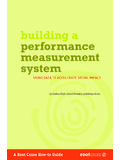Transcription of EMPOWERING VICTIMS OF SOCIAL ISSUE REPORT …
1 SOCIAL ISSUE REPORT : SEPTEMBER 2011 | 1 EMPOWERING VICTIMS OF DOMESTIC VIOLENCESOCIAL ISSUE REPORTHEALTH AND WELL-BEINGDEFINITIOND omestic violence, or intimate partner violence, is a willful single occurrence or a pattern of abusive behavior employing coercion, threat, intimidation, isolation, power or fear that results in physical, psychological or emotional trauma. This REPORT focuses on abuse perpetrated by males against their female ISSUE REPORT SUMMARYI nvestment in programs that empower VICTIMS of domestic violence presents a significant opportunity for SOCIAL impact: 85 percent of domestic violence VICTIMS are Although violence is manifested differently, women of all ages, nationalities, economic classes, and ethnic groups are For more on the scope of the ISSUE , see page 2.
2 High-performing organizations use the empowerment approach, which places the change agency with the VICTIMS , to help them cope with abuse, plan for safety, and develop self-esteem. For more on the recommended approach, see page 3. Although, the cost of domestic violence exceeds $ billion annually, many VICTIMS do not receive adequate Effective investment in the ISSUE can improve and coordinate services. For more on the return on investment, see page 4. FACTS: DOMESTIC VIOLENCE IN THE UNITED STATESSOCIAL ISSUE INDICATORSSIR emphasizes the importance of data collection and outcome tracking to gauge progress on a given SOCIAL ISSUE .
3 In the case of addressing domestic violence, current indicators are insufficient due to the difficulty of establishing a direct cause and effect relationship between the variables. For example, an increase in the number of domestic violence incidents that are reported is often used as an indicator of progress on assisting VICTIMS . However, external forces render this indicator ineffective: The data (domestic violence incidents) are chronically underreported or even unreported because of shame, SOCIAL taboos, and fear of further abuse.
4 An increase in the number of women who REPORT domestic violence annually could represent two possible scenarios: more women are reporting violence because of increased community awareness and support, or abuse incidents are increasing. It is difficult to tell with accuracy which of these factors is affecting the indicator and to what degree. The indicator places the inference of blame on the victim by suggesting that violence can be ended by leaving. The empowerment approach, whose goal is to encourage and support VICTIMS , is built upon post-victimization assistance and risk minimization through education, knowledge, and counseling.
5 The goal of these services is not to end the violence perpetrated against VICTIMS , but to provide assistance and adequate services. SOCIAL Impact Research (SIR) reports are a resource to help donors and funders learn about specific SOCIAL issues affecting at-risk populations and identify high-performing organizations that are addressing those issues. Drawing on current research and interviews with experts representing government, academia, nonprofits, and foundations, SOCIAL ISSUE reports provide an overview of the ISSUE , populations affected by it, approaches to address it, and investment recommendations on how donors and funders can take action.
6 The REPORT is complemented by state reports that frame the ISSUE in the local context and the guide to giving that provides criteria to evaluate organizations working to address the ISSUE . ABOUT THIS REPORTThe National Network to End Domestic Violence annually conducts a survey of domestic violence programs to measure the scope of services requested in a single day. On September 15, 2010, 1,746 out of 1,920 shelters in the , or 91 percent, partici-pated in the survey. They reported that:4 FIGURE 1:5 REASONS CITED FOR UNMET SERVICEST otal number of domestic violence VICTIMS who requested services VICTIMS whose requests for services were met VICTIMS whose requests for services were not met 80,18970,6489,5410510152025303540 Lack of funding for translators or bilingual staffLack of specialized servicesLack of beds or funding for hotelsLack of staffLack of funding for needed services10%21%24%29%38%% of the 1.
7 746 domestic violence programsSOCIAL ISSUE REPORT : SEPTEMBER 2011 | 2In the 1960s and 1970s, second wave feminism and the Battered Women s Movement brought domestic violence into the public sphere. Activists in the movement advocated for greater public attention to domestic violence against women and began providing services to VICTIMS by offering their homes as early versions of shelters. Over the last thirty years, the federal government has increasingly taken action to reduce domestic violence and provide services for its VICTIMS . The Violence Against Women Act (VAWA), signed into law in 1994 and sanctioned both in 2000 and 2005, is due for another authorization in 2011.
8 The VAWA set forth the federal government s policy towards domestic violence, certified funding for support services provided by nonprofits and medical clinics, and established the Office on Violence Against Women within the Department of to the most recent survey by the Department of Justice, million women are assaulted annually, of which 68 percent are abused by an intimate partner, defined as a spouse, former spouse, cohabiter, or former Historically, females have been victimized most often by someone they Although women of all demographics are susceptible to domestic violence, they encounter it differently based on SOCIAL , ethnic, and economic divergences.
9 Specifically, women of low socioeconomic status tend to experience it more frequently and more severely while also having fewer resources and lacking access to services to protect Structural barriers such as poverty, low educational attainment, and lack of access to information make escaping violence more difficult as these barriers limit women s knowledge of available resources and their abilities to be financially A study conducted by the Better Homes Fund from 1992 to 1995, found that rates of violent victimization were significantly higher for women on long-term welfare than those who were on short-term welfare (figure 2).
10 10 SOCIAL ISSUE OVERVIEW: WHY EMPOWERING VICTIMS OF DOMESTIC VIOLENCE IS CRITICAL which on average translate to three women per EFFECTS OF DOMESTIC VIOLENCE ON CHILDRENC hildhood exposure to domestic violence may also lead to se-vere short and long-term consequences, including a higher risk of violent behavior and long-term behavioral, emotional, and psychological symptoms of abuse. Witnessing violence between parents or caretakers is the strongest risk factor of transmitting violent behavior; this is especially true of boys, who are twice as likely to abuse their own partners during Of children who have been exposed to violence, 63 percent fare worse in be-havioral, academic, and SOCIAL functioning than those not exposed to domestic Children are also more likely to either internalize behavioral problems, leading to withdrawal, anxiety, and depression, or externalize them, leading to aggression, delin-quency, and PROVISION OF SERVICESTo serve the VICTIMS of domestic violence.







